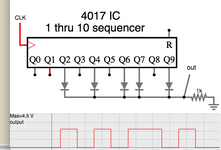Hi what kind of voltage source that generate a sequence of binary. Like other voltage source generate square wave we call that Vpulse, Vdc to generate dc signal, Vpwl for generating piecewise linear signal. In my case I want to generate a sequence of binary wave and it is not random. Signal that I set myself.

